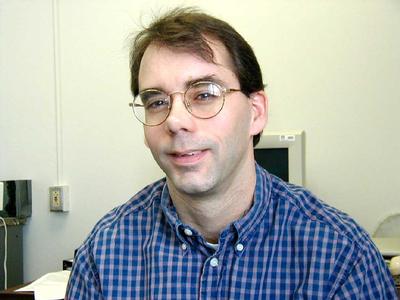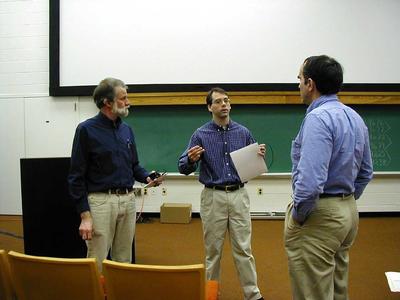6 April, 2001
John Weatherly, Ice Geophysicist, Global Climate Models
John Weatherly of the Cold Regions Research and Engineering Laboratory
(CRREL) of Hanover, New Hampshire, specializes in the improvement of global
climate models representing ice and the Arctic climate. Dr. Weatherly's
focus is on computer models that demonstrate how ice responds to the climate
in Polar Regions. Working with existing models, John creates new computer
models for the improvement of their comparison of data.
Dr. Weatherly works with two main groups of scientists; those who go to the
field to collect data on ice properties and those comprising the global
climate community. The National Center for Atmospheric Research (NCAR) in
Boulder, Colorado is an example of one of these communities.
A question this community might ask is, "How is the ice melting"? In
contrast, the field scientists go into the Polar Regions to take
measurements where the ice is melting. John Weatherly takes this data and
compares it to the predictions of global climate models. He then works to
improve these models to better their comparisons of this data.
Because of the structure of its ecosystems, the Arctic is an excellent place
for the study of global climate changes. Global climate models indicate
that changes will first be observed in the Arctic. This is due to the
climate's influences on the Arctic's fragile ecosystems.
Global climate studies address how humans affect the climate (i.e.
greenhouse gases), how the climate of the globe affects the Arctic and how
the climate changes in the Arctic affect Arctic peoples and the global
populations. The global climate model that the National Center for
Atmospheric Research (NCAR) has developed is probably the most comprehensive
existing model for these studies.
Is the climate warming? It appears to be warming due to the human
contributions to greenhouse gases. There are different models with a range
of estimates of how much warming can be expected. What is being observed in
climate warming is the extreme periods of hot temperatures that occur
occasionally. Although warmer temperatures seem to be more frequent, and
probably will increasingly occur, cold winters are also to be expected.
Temperatures will not always be warmer all of the time.
The Arctic System Science Program (ARCSS) at the National Science Foundation
(NSF) represents climate modeling as it relates to polar science. From
ARCSS, other NSF sponsored programs are explored for ways they can be
connected to better understand global climate changes in the Arctic.
For further information on global climate models, navigate the National
Center for Atmospheric Research (NCAR) website at http://www.ncar.ucar.edu.
NCAR was founded in 1960 for research on atmospheric and related scientific
problems. Also investigate the Arctic System Science Program (ARCSS)
website, http://www.nsf.gov/od/opp/arctic/system.htm, for news, publications
and contact information. Information on Dr. John Weatherly's current and
past projects including links and contact information may be found on his
CRREL web page at
http://www.crrel.usace.army.mil/sid/personnel/weatherly.html.
By Sandra Kolb, March 2001

John Weatherly in his office at CRREL. Photo by Sandra Kolb.

Terry Tucker (left), John Weatherly (center) and Don Perovich (right) discussing the shrinking and thinning of the Arctic ice pack following a seminar presented by Terry and John at CRREL. Photo by Sandra Kolb.
Contact the TEA in the field at
.
If you cannot connect through your browser, copy the
TEA's e-mail address in the "To:" line of
your favorite e-mail package.
|
